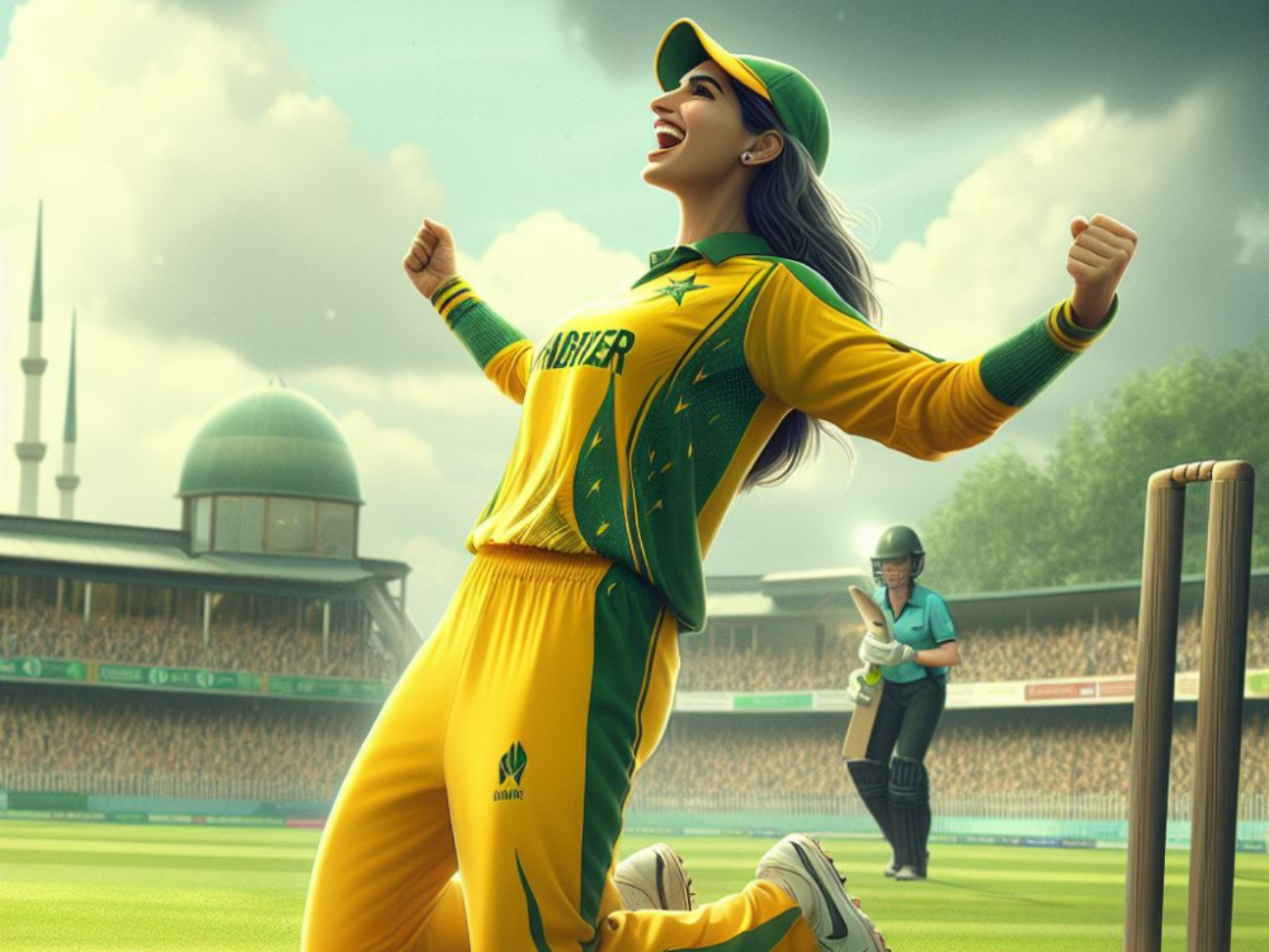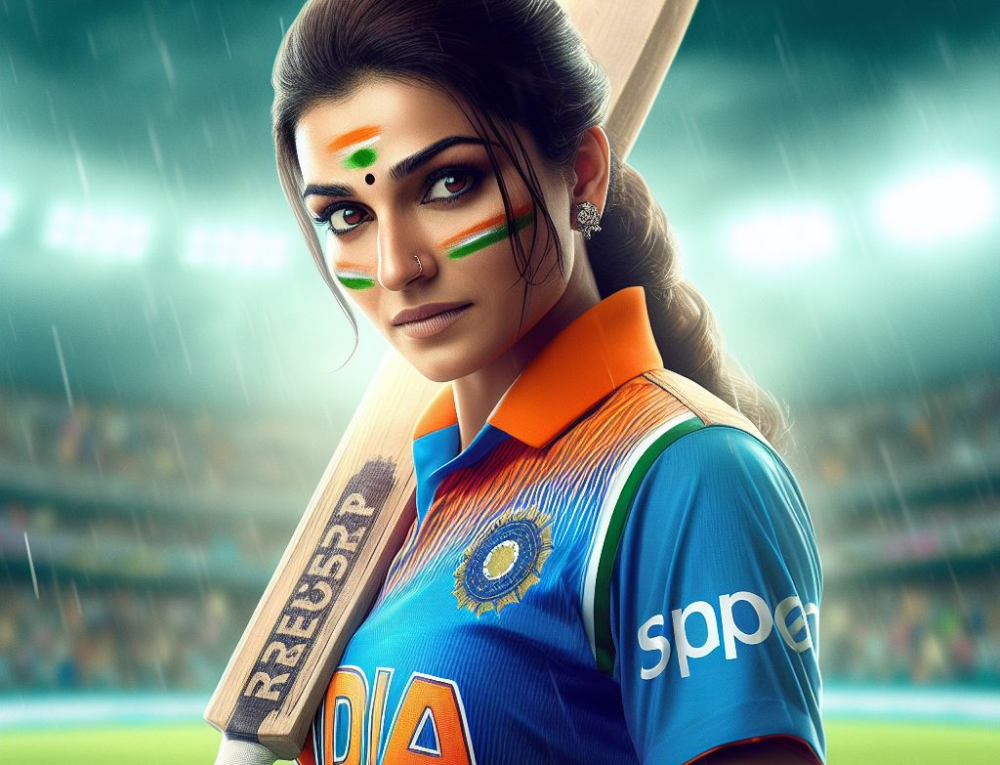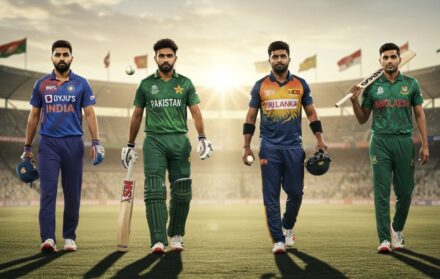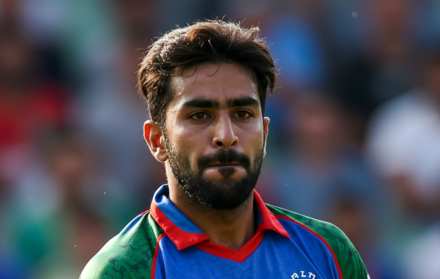
Womens Cricket and The Push for Equal Pay
The realm of women’s cricket is currently undergoing a profound evolution, marked by a vigorous push for gender equality, particularly in the domain of compensation. As the world acknowledges the exceptional skill and dedication of female cricketers, the fervent push for equal pay reverberates within the cricketing community.
This exploration into the quest for equitable remuneration takes us through the historical journey and landmarks of women’s cricket, revealing the challenges and triumphs that have shaped the current discourse.
Delving into the history and evolution of cricket, we uncover the foundations upon which women’s cricket has built its legacy. Understanding the historical context is vital in comprehending the obstacles that women cricketers have faced in their pursuit of recognition and fair compensation.
This historical narrative provides crucial insights into the journey towards equality, acknowledging the strides made while recognizing the work that remains.
Iconic cricket stadiums serve as symbolic witnesses to the growth and impact of women’s cricket on a global scale. These arenas, steeped in tradition, highlight the immense contribution of female athletes to the sport.
Recognizing these venues underscores the importance of equitable acknowledgment and compensation for the women who bring the sport to life within these historic structures.
The aspiration for women’s cricket in the Olympic Games marks a pivotal step towards mainstream recognition and acceptance. Inclusion in such esteemed events not only elevates the status of women’s cricket but also reinforces the demand for fair compensation.
The pursuit of equal pay aligns with the broader goal of establishing women’s cricket as an integral part of the global sporting landscape.
Beyond the boundaries of the cricket field, the fight against sexism in cricket remains a persistent challenge, with women actively challenging stereotypes and advocating for their rightful place in the sport.
This ongoing fight against sexism intersects with the call for equal pay, forming a collective movement within the cricketing community to address systemic inequalities.
In this article, we embark on a journey through the multifaceted landscape of women’s cricket, delving into the historical nuances, iconic venues, and the ongoing fight for gender equality.
As we explore the push for equal pay, our aim is to shed light on the importance of acknowledging and rectifying the disparities that persist in women’s cricket.
Join us in this critical conversation about equality, representation, and the future of women’s cricket on the global stage.
Overview of Women’s Cricket

Women’s cricket has gained recognition and popularity in recent years, with an increasing number of female athletes showcasing their skills. Here is an overview:
1. Participation: The participation of women in cricket has steadily increased on a global scale. More countries now organize women’s cricket leagues and international tournaments.
2. International Competitions: Women’s cricket has its own international competitions, such as the ICC Women’s World Cup and ICC Women’s T20 World Cup. These tournaments feature teams from various cricket-playing nations, offering a worldwide stage for female cricketers.
3. Professional Contracts: Professional contracts in women’s cricket have provided players with financial security and elevated the overall standard of the game. Top players now have the opportunity to earn a living through the sport.
4. Skill Level: The skill level in women’s cricket has greatly improved. Players are demonstrating their proficiency in batting and bowling, showcasing agility, strength, and strategic thinking on the field.
5. Media Coverage: Women’s cricket has witnessed an increase in media coverage, with matches being televised and streamed online. This has raised awareness and expanded the fan base.
Pro-tip: Stay updated with the latest happenings in women’s cricket by following cricket websites, social media accounts of cricket boards, and women cricketers. Don’t miss out on exciting matches or updates in this dynamic sport.
Gender Pay Gap in Cricket
1. Overall Gender Pay Gap: A study has revealed that female cricketers earn approximately 30% less than male cricketers in terms of annual earnings.
2. Match Fees Disparity: Female cricketers earn around 60% less than male cricketers in match fees. Female cricketers receive an average of £900 per match compared to £2,500 earned by male cricketers.
3. Prize Money Differences: Prize money in women’s cricket is considerably lower than in men’s cricket. Male winners receive around £4 million while female winners receive only around £500,000 in major tournaments like the Women’s World Cup.
4. Sponsorships and Endorsements: Female cricketers struggle to secure lucrative sponsorship deals. Only a few top players benefit from substantial endorsements, contributing to the overall gender pay gap in cricket.
5. Efforts to Address the Gap: Cricket organizations and governing bodies have recognized the gender pay gap in cricket and have undertaken initiatives to address it. These efforts include increasing visibility and popularity of women’s cricket, securing better broadcast deals, and attracting more sponsorship investments.
These steps aim to bridge the pay gap and provide female cricketers with more equitable opportunities.
Importance of Equal Pay in Women’s Cricket
The importance of equal pay in women’s cricket cannot be overstated. It is a recognition of the effort, commitment, and talent of female players. Equal pay in women’s cricket validates their contribution to the game and acknowledges their hard work and skills.
This recognition not only boosts the morale and motivation of female cricketers but also encourages them to continue working hard and gives them a sense of value and worth in their profession.
Offering equal pay helps retain talented female cricketers, as when players feel recognized and rewarded, they are more likely to stay committed to the game, leading to greater sustainability and growth of women’s cricket.
Equal pay sets a positive example for young girls aspiring to play cricket professionally, showing them that their skills and dedication will be recognized and rewarded. This promotes inclusivity, challenges stereotypes, and fosters a more equal and diverse sporting culture.
Moreover, equal pay in women’s cricket contributes to closing the gender pay gap in broader society, setting a precedent for fair treatment in other industries as well.
It also attracts more attention and support, enhancing the popularity and commercial value of women’s cricket, leading to increased investment and growth opportunities.
Efforts Towards Achieving Equal Pay
Efforts towards achieving equal pay are crucial for promoting gender equality in the workforce. Steps must be taken to address the gender pay gap and ensure fair compensation for all employees.
1. Salary transparency: Companies should be transparent about their pay structures and make salary and compensation information publicly available. This promotes accountability and helps identify any gender-based discrepancies in pay.
2. Pay equity audits: Regular audits should be conducted to assess and identify gender pay gaps within organizations. These audits help identify areas where adjustments are needed to ensure equal pay for equal work.
3. Eliminating bias in hiring and promotions: Organizations should implement fair and unbiased practices for hiring and promotions. Evaluating candidates and employees based on skills, qualifications, and performance rather than gender can help eliminate gender-based pay disparities.
4. Equal opportunities for career development: Providing equal opportunities for training, mentorship, and career advancement is crucial for achieving pay equality. Organizations should invest in cultivating and nurturing talent for all employees, regardless of gender, to create a level playing field.
5. Addressing societal norms and stereotypes: Efforts to promote equal pay should also challenge and change societal norms and stereotypes that perpetuate gender inequality in the workplace. This involves challenging biases and creating a culture that values and supports diversity and inclusion.
By implementing these efforts towards achieving equal pay, organizations contribute to a more equitable and inclusive work environment, ensuring fair compensation for all employees, regardless of gender.
Benefits of Equal Pay in Women’s Cricket
Equitable pay in women’s cricket provides numerous benefits for talented female athletes. It serves as an incentive for them to pursue cricket as a career option, which ultimately enhances the talent pool in the sport.
The implementation of equitable pay empowers these female athletes by demonstrating that their skills are equally valued as those of their male counterparts. This recognition and fair treatment not only boost their morale and confidence but also attract sponsors and investors who recognize the sport’s potential for profitability.
The availability of equitable pay in women’s cricket also leads to improved resources and training opportunities for female cricketers. This, in turn, allows them to further develop their skills and abilities.
Additionally, equitable pay increases media coverage and visibility for women cricketers, providing them with a platform to showcase their talent to the world. By doing so, they inspire future generations and encourage more women to participate in the sport.
Furthermore, equitable pay fosters healthy competition among women cricketers, resulting in a higher level of play and elevating the overall standard of women’s cricket.
The recognition and rewards provided through equitable pay encourage athletes to push themselves to achieve their best. This healthy competition drives them to constantly improve and excel in their field.
Lastly, equitable pay plays a crucial role in reducing gender discrimination and promoting a more inclusive and fair environment within the sport.
It paves the way for gender equality within cricket and helps in creating a level playing field for both male and female cricketers. For more information on Women’s cricket and the push for equal pay, you can visit the Indian Express.
Current Status of Equal Pay in Women’s Cricket
The current status of equal pay in women’s cricket has shown significant progress towards achieving gender equality in the sport.
Cricket boards, such as Cricket Australia and the England and Wales Cricket Board, have taken steps to address the gender pay gap by implementing policies that ensure fair and equal compensation for female cricketers.
In 2017, Cricket Australia announced a groundbreaking agreement to increase the pay of female cricketers, a notable achievement in the current state of equal pay in women’s cricket.
The International Cricket Council (ICC) has also played a role in supporting gender equality by introducing initiatives like higher prize money for women’s tournaments.
Despite these advancements, women’s cricket still faces challenges, particularly in terms of financial opportunities and sponsorships, which ultimately affect the overall salary scale.
Therefore, continuous advocacy and support from governing bodies, sponsors, and fans are necessary to achieve equal pay for female cricketers.
To further enhance progress, stakeholders should raise awareness about the value and accomplishments of female cricketers.
They should encourage corporate brands to invest in women’s cricket, promote equal media coverage and exposure, advocate for fair sponsorship and prize money distribution, and celebrate the achievements of female cricketers.
By implementing these suggestions, the current status of equal pay in women’s cricket can continue to advance, thereby ensuring recognition and fair compensation for female cricketers.
Challenges in Achieving Equal Pay

Achieving equal pay presents numerous challenges in women’s cricket, including disparities in revenue and funding between men’s and women’s cricket.
One significant factor contributing to this challenge is the discrepancy in viewership and revenue generated through sponsorships and broadcasting deals. As a result, male cricketers receive higher salaries compared to their female counterparts.
Another obstacle is the lack of investment and support for women’s cricket at the grassroots level. This hinders the development of talent and diminishes opportunities for female cricketers to reach the highest level of the sport.
Due to insufficient resources and investment, women’s cricket struggles to generate the same level of interest and revenue as men’s cricket.
The challenges are further compounded by cultural biases and stereotypes. Gender norms devalue women’s contributions in sports, including cricket, which results in unequal opportunities, lower salaries, and limited resources for female cricketers.
Addressing these challenges requires a comprehensive approach that includes promoting and investing in women’s cricket at all levels. This includes providing equal access to training facilities, coaching, and resources.
Creating more opportunities to showcase and promote women’s cricket can significantly boost its popularity and revenue generation.
Encouraging equal pay in women’s cricket, as well as other industries, necessitates a multi-faceted approach. This approach involves addressing revenue disparities, investing in grassroots development, and challenging societal biases. By working together, we can create a more equitable future for women in cricket and beyond.
Success Stories and Role Models
Success stories and role models are crucial in inspiring individuals, particularly in women’s cricket. It is important to have role models who inspire and guide you, as they can play a significant role in helping you achieve your goals.
In the world of women’s cricket, there are several notable role models who have achieved remarkable success and continue to inspire others.
One such role model is Mithali Raj, the Indian cricketer who is widely regarded as one of the greatest batswomen globally. Mithali holds numerous records and has been a pillar for the Indian women’s cricket team. Her achievements and dedication make her an inspiration for aspiring cricketers.
Another inspiring figure in women’s cricket is Ellyse Perry, the Australian all-rounder who excels in both batting and bowling. With her remarkable skills and achievements, Ellyse serves as a role model for aspiring cricketers, showcasing the importance of balance and versatility in the game.
Suzie Bates, the New Zealand cricketer, is another noteworthy role model in the game. She consistently performs at the highest level and is regarded as one of the best all-rounders in women’s cricket. Suzie’s achievements inspire young girls to pursue a cricket career and show them that with hard work and dedication, they too can excel in the sport.
Harmanpreet Kaur, the Indian cricketer, gained fame with her sensational innings in the 2017 Women’s Cricket World Cup. Her fearless batting and leadership skills earned her admiration and respect, making her a role model for aspiring cricketers who are looking to make their mark in the game.
Deepti Sharma, the young Indian cricketer, has already made a mark in cricket. She holds the record for the highest individual score in a Women’s One-Day International and continues to excel. Deepti’s achievements serve as an inspiration for young cricketers, showing them that age is not a barrier to success and that hard work and determination can lead to great accomplishments.
Draw inspiration from these success stories in women’s cricket and work hard to achieve your goals.
Having role models who inspire and guide you is crucial for success in any field. Whether you are aiming to become a professional cricketer or pursuing any other career, it is important to have someone to look up to and learn from.
The Way Forward: Steps to Achieve Equal Pay
The way forward to achieve equal pay in women’s cricket requires steps that address underlying issues. Here are the steps that can help pave the way towards equal pay:
1. Evaluate pay structures: Analyse current pay structures to identify any discrepancies or biases. This includes assessing salary scales, bonuses, and incentives.
2. Implement pay transparency: Ensure all players have access to pay scale and contract information. This transparency will help identify disparities and hold governing bodies accountable.
3. Advocate for equal opportunities: Promote gender equality in team selection, coaching staff, support resources, and participation in tournaments and leagues.
4. Increase sponsorships and media coverage: Encourage sponsors and media outlets to invest in women’s cricket. Increased exposure will boost the sport’s popularity and lead to higher revenues and financial support.
5. Establish performance-based pay: Adopt a pay model that rewards players based on skill, achievements, and contribution to the team’s success. This ensures fairness and meritocracy.
6. Collaborate with players’ associations: Work closely with players’ associations to negotiate fair and equal pay deals. These associations provide support and representation for players’ rights and interests.
7. Advocate for legislative changes: Lobby for legislative changes that promote gender equality and mandate equal pay for men and women in sports. This provides a legal framework to enforce equal pay policies.
8. Educate and raise awareness: Conduct awareness campaigns to educate stakeholders, fans, and the public about gender equality and the benefits of equal pay in women’s cricket.
By taking these steps, the cricket community can work towards achieving equal pay and ensuring that female cricketers receive the recognition and compensation they deserve.





